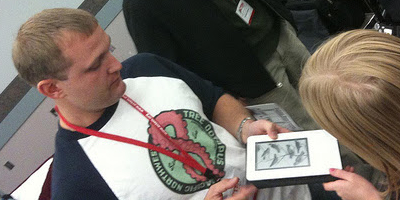Name: Todd Conaway (Faculty site, TheWholeClassroom.com, YouTube, @todd_conaway)
Organization: Yavapai College
Current title: Instructional Designer
Selected accolades: Departmental 2012 Award for eLearning in technical support and service from the ITC ((ITC Announces the Recipients of the ITC 2012 Awards for Excellence in eLearning)), blessed with a wonderful family, almost 1000 miles walked in the Grand Canyon
What skill(s) do you feel are most important for today’s students to explore in academic settings (tech or non-tech related)?
Curiosity. Passion. Learning to learn. Finding relevance. I don’t think we need to always address the “why are we doing this?” all the time in classes, but I do think that in many cases we have lost that conversation and part of the result is disconnectedness from the “real world” that lives outside the classroom walls.
What we are calling “21st century skills” is simply literacy, and it is part of all literacy that involves words, numbers, sounds, graphs, images, and videos among many other types of information. As long as we continue to separate “digital” or “technological” from other types of media literacy, we will do our students a disservice. In many places it is an amazing and powerful part of our ability to be citizens and do good things.
For a teacher looking to use technology to connect with students, enhance learning or embrace 21st century skills, where do you suggest one begin?
I suggest to teachers that they will learn tools most quickly and deeply of they have a personal connection to the content they explore with the tool. For example, I would never tell a teacher new to Facebook to go create a group for their class and start using Facebook ((http://www.facebook.com)). I would suggest they begin (more…)


